How Much Does it Cost to Build a Gymnasium?

The first question that comes to mind when considering starting a gym business must be, “how much does it cost to build a gymnasium?”. Right?
It might sound mind-boggling to map out, but don’t worry; luckily, you have landed on the right page! This blog will cover the cost of building a gym from scratch in a comprehensive manner.
The fitness industry is growing faster than ever in the United States, and starting a gym business is highly lucrative. To make it even more profitable in the long run, make a strategic and well-informed move from step 1!
Since you are setting the cornerstone of the gym business, breaking down the cost to build a gym is essential. Usually, small to mid-sized gyms cost around $50,000 to $150,000. On the other hand, commercial gyms cost more than $500,000 to start from scratch.
Additionally, it is essential to look into the smallest to crucial requirements in a clear context. So, let us take you through the first step of estimating the financial investment.
If you are ready to embark on the journey to start your own fitness business, here’s the way!
Estimated cost of building a gymnasium
First of all, the cost of building a gymnasium depends on the size and layout of the facility. If you intend to construct a gym from scratch, it will cost differently from using an existing gym space. That’s how the cost differs according to the business plan.
Additionally, the estimated financial investment required to open a gym can be broken down into two parts:
- Startup or one-time cost
- Maintenance and ongoing cost
Each part contains all the details and information about the estimated or average cost of starting a fitness center. So, let’s take a closer look!
Startup or one-time cost
To initiate the business, you must need some solid capital in hand to execute your fitness business plan. Here are the things that require time and capital to start for the first time.
Lease deposit or down payment

The property cost is the most considerable expense to initiate your fitness business. Additionally, the property cost depends on the following:
- Size and location of the facility
- Leasing or purchasing the property
In the United States, the average size of a gym is 3000 square feet, so if you are leasing or purchasing the space, the cost will differ.
For a lease property, you have to pay $20-30 per square foot annually, which makes it an annual lease of $60,000 to $90,000. Additionally, you may need to spend the lease deposit of 3-5 months as security to the commercial landlords. The lease deposit is drawn from the account based on a contract violation.
On the other hand, if you intend to buy the property, you might need to pay the owner based on per square foot. It also requires to pay 20-30% of the total to the property owner. So, if the rate lies between $40-60 per square foot for a 3000 sqft, expect to pay $120,000-180,000 to own the space.
Construction cost
Since you have got the keys to the space, it is time to bring it into the shape of the desired gym type. At this point, you must consider whether you want to build a steel or brick gymnasium.
For a 3000 square feet space, the cost to build a steel or brick gymnasium differs. Here is a comprehensive table covering the minimum to the maximum and average price of the steel or brick gymnasiums.
| Cost of constructing a 3000 square feet Gymnasium | ||
| Steel gymnasium | Brick gymnasium | |
| Minimum cost | $311, 250 | $321,750 |
| Maximum cost | $2,314,875 | $2,393,625 |
| Average cost | $619,500 | $640,500 |
Both structures offer cost, durability, and resistance benefits, but choose what serves your gym type the best!
Type of gym
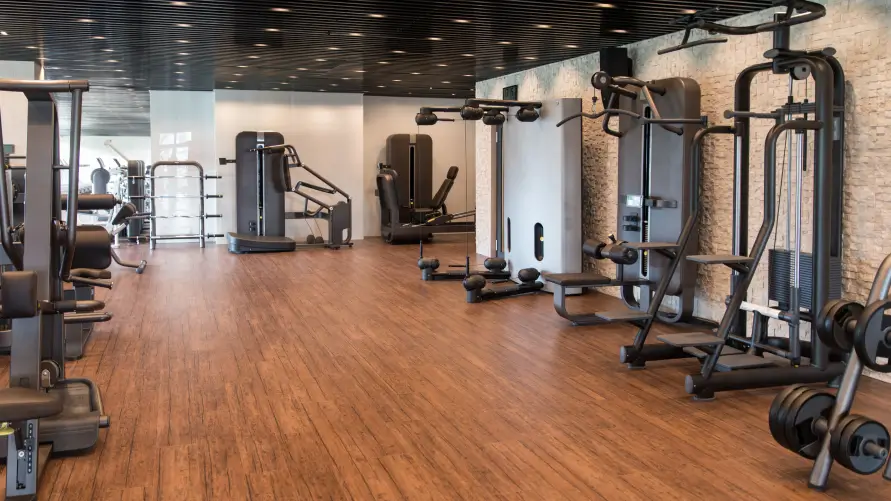
Here are a few types of gyms that you need to know as an essential aspect in constructing the gym space. You can easily renovate or build the space by understanding your desired gym type’s requirements and structural layout.
Here are multiple types of gym and fitness centers:
- Powerlifting gyms
- CrossFit gyms
- Boutique gyms
- Personal training gyms
- Rock climbing gyms
- 24-hour access membership gyms
- Big box gyms
Considering the type of gym and how it should look, you can easily bring the mind-mapped gym space into reality. Therefore, pay close attention to the construction cost per square fit according to the desired type of gym.
Legal fees
It is one of the most crucial aspects of the business plan. When starting a gym, gym owners must complete the legal processes before opening the doors. To deal with the legal issues, you will need to hire a lawyer to process the lease or sale agreement. It will also cover other legal processes, so you can expect to pay $200-300 per hour.
Moreover, allocating around $2000-2500 for start-up legal fees is better. You might find it bothersome to pay a lawyer, but remember the convenience and ease you feel after completing the legal processes. Above all, you can easily focus on the lucrative side of your business!
Permits & Licenses
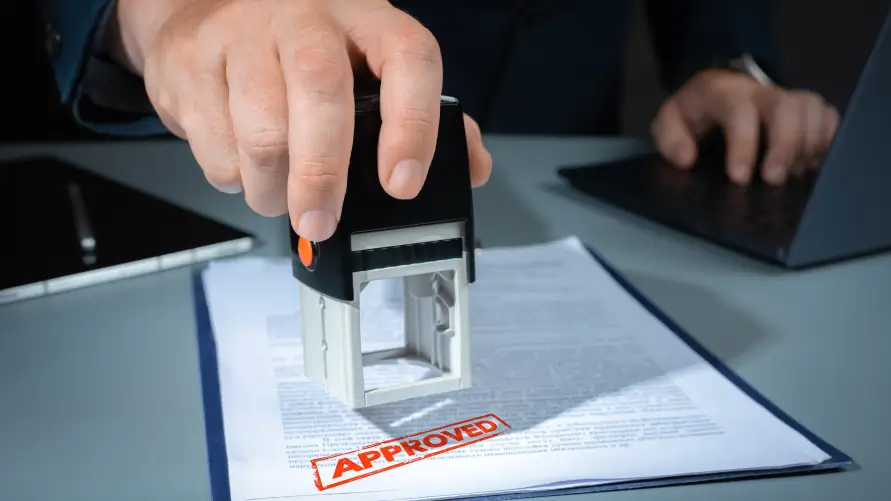
For starting a commercial gym, it is essential to adhere to the legal requirements for starting a gym business. To avoid the inconveniences later, it is better to stay on the right side of local and federal authorities.
Additionally, it saves you from doubtful inspections and interrogations. So, it is vital to complete the legal paperwork and licensing as the priority. Here is what you need to complete:
- Business License
- Registered trademark and name
- Health and safety certifications
- Fitness certifications (ACSM, NASM, ACE, and ISSA)
- Employer Registration
Besides, it also gives credibility to your business, so take a deeper look at the licensing requirements according to the local council. Lastly, you can allocate $5000 for this process.
Gym equipment
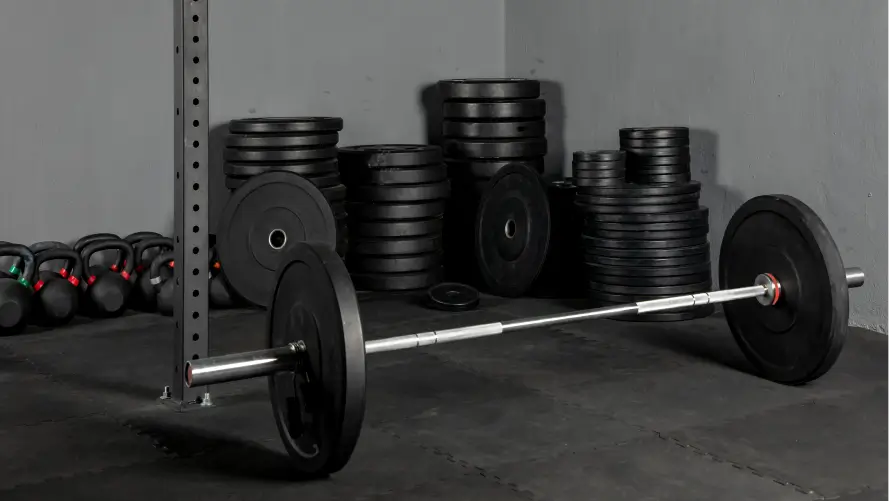
From “How much does it cost to build a gymnasium?”, you have reached the point of getting the right gym equipment. Sounds satisfying!
Now is the point to decide whether to buy or lease the gym equipment. For this, make a well-thought-out move based on your capital and the equipment required for your gym. If the idea of leasing equipment suits you, go for it. Otherwise, you can purchase the gym equipment, but remember the maintenance charges you have to manage every month. On the other hand, the maintenance is due on the lessor’s end.
Additionally, create a list of the equipment required for your gym space. From complete training to non-training equipment, here is what you need for your commercial gym:
- Cardio equipment ($15,000-17,000)
- Treadmills
- Bikes
- Strength equipment ($20,000-25,000)
- Weights
- Racks
- Weight machines
- Functional training equipment ($5000-7000)
- Resistance bands
- Kettlebells
- Medicine balls
- Mirrors and Flooring ($8000-10,000)
- Sound systems ($3000-5000)
- LEDs and non-training equipment ($15,000-20,000)
- Chairs
- Tables
- Couches
- Artwork and wall decors
- Lockers rooms
- Post-gym facilities (Sauna, relaxing therapies)
Since purchasing the gym equipment is quite expensive, it is suggested that the gym equipment be leased. Leasing gym equipment requires paying $3000-4000 monthly with fresh gear and well-maintained equipment in your gym space.
Hardware
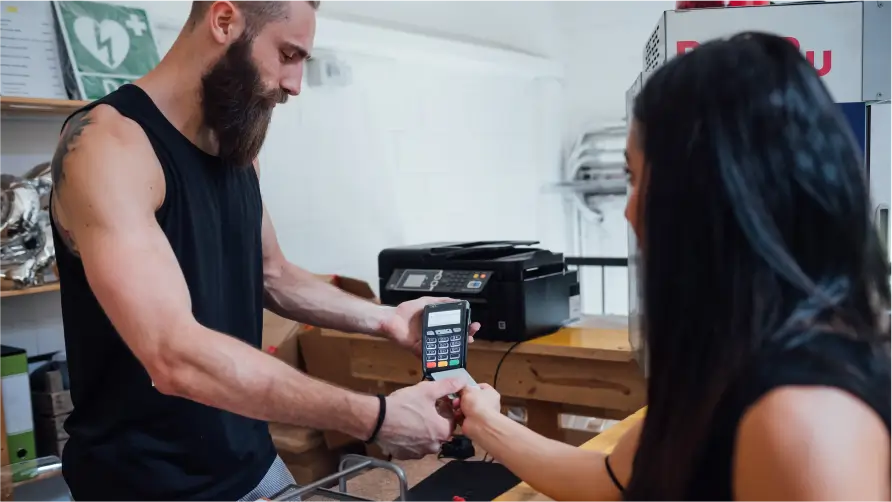
After purchasing the gym equipment, the need for hardware or technological aspects to incorporate into your gym arises. Apart from the non-training equipment and tools, you need a system to manage the payments and customers coming in and going out.
In other words, you need to have a POS system integrated with hardware. To manage the cash and ensure customers’ security, you will need the following:
- Cash drawer
- Tablets
- Card readers
- Printers
- Security system
As for the startup cost, you can expect to spend around $1400-1500. However, the model and the quality of the hardware differ. Moreover, for commercial gyms, the number of tablets, printers, and cash counters may increase as required.
Maintenance & ongoing cost
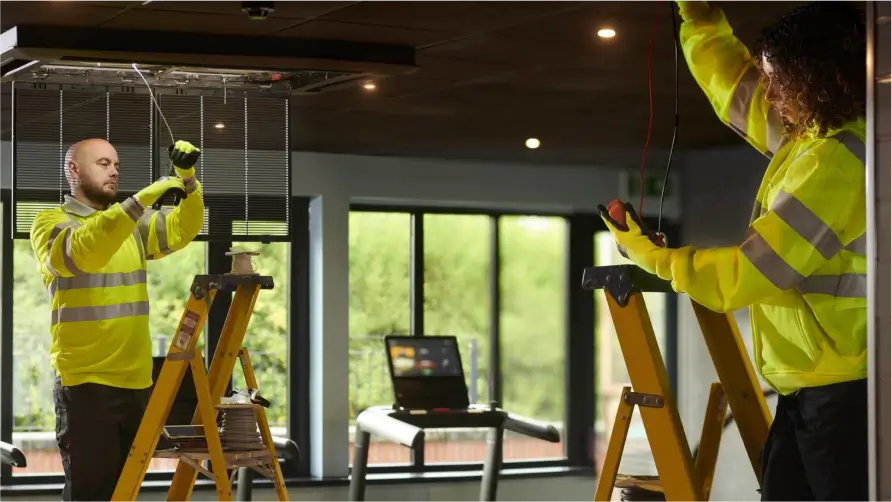
Maintenance and ongoing costs come in the second part of the overall cost. You need to consider the fluctuation in the expenses. Sometimes, you might spend a lot; next month, you might even save a lot! So, here are the things that you will be spending on every month:
Taxes & wages
One of the biggest part of your expenses would be spent on taxes and wages. You can allocate a part for taxes either quarterly or annually. Usually, the applicable taxes are income taxes, payroll taxes, and local sales taxes. As the business income is taxed less under the U.S. system, you can calculate the applicable taxes and pay them on a quarterly basis.
Next comes the most essential and ongoing expense from the monthly income: salaries and wages. The wages depend on the number of staff you have and their proportionality to the members. As a rule of thumb, you need to employ one person for 45-60 members. So, for around 1100-1200 members, you will need 24-26 employees.
Moreover, it includes fitness instructors, personal trainers, and gym managers, besides the front-desk staff, cleaners, and sales staff. Considering the average salaries of the staff, it will cost you around $750,000-$950,000 annually.
Furthermore, you can choose between employing personal trainers or allowing them to be independent contractors. So, pick what works best for you while adhering to the IRS guidelines about employing or making independent contracts.
Utilities
Apart from the lease payment monthly, you must manage the utility bills. For commercial gyms, the utility bills are primarily for electricity and a smaller portion for water.
Since many gym equipment are plugged in, you can estimate the utility bills according to the gym space of 3000 square feet and the equipment. You can expect to pay around $2500-2800 monthly for the utility bills.
However, there is the possibility of fluctuation based on customers coming in and monthly usage of gym equipment.
Marketing

In the world of marketing and branding, you will need to hire a marketing agency to create a brand voice. For this reason, you have to set a marketing budget of around $3500-5000.
Additionally, you can increase engagement with your audience and generate more revenue from multiple income streams. However, you will need effective gym marketing strategies to reach your target audience.
Moreover, it requires you to create a solid online presence on Instagram, Facebook, and your website. To get this all done, you must set aside a maximum budget of $5500.
Gym management software
It is worth spending on comprehensive gym management software to bring more efficiency to your gym operations. From the front-desk tasks to scheduling and back-end labor, gear up your gym business with more robust, personalized, and responsive software.
Consider using gym software that incorporates essential features to manage leads to billing, payments, memberships, and staff in one place. It should also enable a mobile app to reflect your brand identity. In other words, it should align with your gym business needs to improve efficiency and lead on the successive path.
You can expect to pay $79-$150 monthly to have such an all-inclusive software.
Gym Insurance
Business insurance is a crucial aspect to consider before officially starting the gym.
In case of injury or accident, you need insurance to protect your gym business and yourself. For this reason, you can ensure yourself according to the 5 types of insurances.
Pick the most appropriate insurance, from general liability to professional liability, business income, workers’ compensation, and equipment breakdown insurance. For gym insurance, you need to pay around $500-2500 monthly based on your gym insurance.
Miscellaneous expenses

The miscellaneous expenses include multiple unrelated things that might cost you something on and off. Firstly, you can hire a freelance fitness writer for your gym to write content for your website. Emails and website blogs help improve your search engine ranking and position yourself as an industry expert as well.
Additionally, it allows your members and audience to get solutions and responses to their queries regarding fitness and nutrition. To regulate educational and engaging content, you can allocate a budget of $500 monthly for the fitness writers.
Besides, it also includes the maintenance and repairs of the gym equipment and non-training equipment. From leasing equipment to purchasing second-hand equipment, you can set aside $25 monthly for each piece of equipment.
However, there is room to save on monthly maintenance expenses as only a few pieces of equipment demand maintenance.
Factors to consider for building a gym

There are lots of factors that affect the costs to build a gym. In other words, the question of “how much does it cost to build a gymnasium?” depends upon several factors, including:
- Location Demographics
The more dense or populated the area, the better the customers’ reach will be. The price of building a gym depends on the gym’s location, visibility, and access to the people.
Gyms located in populated and busy areas can attract customers naturally. However, starting a gym business in market and residential areas is expensive for new gym owners.
- Type of gym
Knowing what type of fitness business suits your audience’s needs is also a highly determining factor. You can choose the type of gym, from small to commercial gyms, boutiques, CrossFit gyms, and yoga to boxing studios. In other words, the gym type determines the start-up cost.
- Funding options
Undoubtedly, funds are the most essential element in turning the idea into reality. When thinking of starting a business, it is important to consider the funding options. Multiple options exist for getting government and private loans to start your business.
Usually, government loans have reduced interest rates compared to bank and private lending institutions. Both of the funding options offer separate pros and cons.
- Essential equipment
Considering the type of equipment is also important to start a commercial gym business. Whether to purchase the gym equipment or lease, you need to make a strategic move while considering the funding options and investment.
- A well-crafted business plan
Starting a gym business is not a walk in the park, so you must craft a comprehensive business plan. From stating the missions to researching and outlining initial costs to the profit-loss margin, you must create a full-fledged business plan.
Additionally, you need a blueprint to navigate in implementing the business idea. So, consider all the essential factors at the back of your mind when crafting a gym business plan.
- Smart gym management software
You will also need a smart tech solution to simplify your gym operations. You can’t wholly rely on the staff members to manage the front-desk to back-end tasks, so smart gym management software can streamline the operations flawlessly.
Moreover, it brings more efficiency and reliability in managing members and staff while making the cash flow more transparent. So, pick an efficient gym management system to over-refine the burdensome tasks.
Bottom Line
The average cost to build a gymnasium on lease ranges between $55,000-150,000. On the other hand, if you purchase the gym space and construct it according to your gym requirements, the cost goes beyond $500,000. So, if you want to start your gym business from scratch, you need reliable funding to make it happen!
Besides, keep the startup and ongoing costs in mind while crafting your gym business plan. Understanding every bit of the expense cost will make it easier for you to manage your finances in the long run.